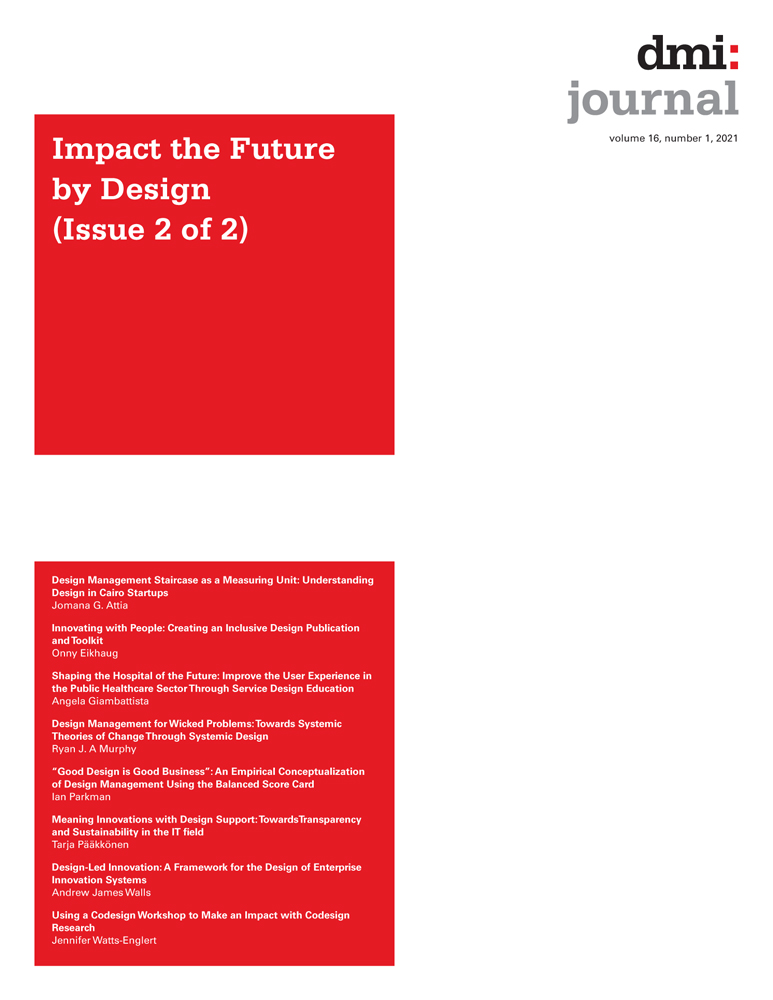Shaping the Hospital of the Future: Improve the User Experience in the Public Healthcare Sector Through Service Design Education
Abstract
The Public Healthcare Sector is experiencing a profound crisis due to socio-dynamic changes (Parameswaran and Raijmakers, 2010) difficult to manage, such as demographic aging and population growth. Furthermore, if we consider the new alternative approaches in disease management and the growing participation of patients in healthcare decision making (Vahdat et al., 2014), deep considerations and paradigmatic shifts in the way healthcare professionals design, produce and use the medical products are needed. The growing interest in the potential of Design approaches, from which to draw consolidated models of thought and creative and divergent practices (Chamberlain, 2015) to respond to fundamental challenges for the health of our society, has recently expanded from the dimension of products and services. This represents an unmissable opportunity for the Design Discipline to switch from a Product-Centered model to a Human-Centered model where the user is placed in the center of the process and the product expands into product/service with a systemic perspective. The introduction of Service Design in medical settings requires a multilevel approach that analyzes the complexity of the system, in which the nature of the problems intersects with economic and social dynamics too (Di Lucchio and Giambattista, 2017). From this point of view, the methodologies of Service Design offer conceptual models that help to focus the design action on the User Experience, considering all the characteristics of the service in a structured way and openly thinking about the individual components without losing the holistic view. According to this new perspective and given the growing relevance of services in the contemporary economy, in the corporate strategies and in the public sector, the academic approach to Service Design and the Service Design Education in the context of Healthcare need to be revised through a better definition of design competencies (Morelli and Götzen, 2017). In the light of these considerations, this paper describes the didactic experience held within an International Master of Science in Product Design at Sapienza University of Rome, where the students have experimented the methods of the Service Design (Stickdorn et al., 2011) to respond to the problem of designing the User Experience (Norman, 2004) in a Public Healthcare Context. The aim was to transfer to the students the skills useful for achieving a Service and Social Innovation (Manzini, 2015) in the field of Public Healthcare through the development of a Design Proposal of a product/service that would provide a new User Experience for the Pediatric Emergency Room of the local public Hospital 'Policlinico Umberto I’ by taking into consideration its social, economic and technological long-term sustainability. In order to reach that goal, the didactic activities were organized as a three-step process (Research, Design, Develop) each with their own tools that have supported students in learning, thinking, analyzing, understanding, and evaluating all the stages of the design process. The course finalized at a set of Design Proposals demonstrating the potential of Design Discipline to bring improvements to the Public Healthcare Services Sector thanks to its creative and divergent thinking and to the development of effective Users Experiences.
Introduction1
The Public Healthcare Sector has undergone profound shifts over time due to many socio-cultural changes, such as the population becoming elder and elder, the rising of the healthcare costs, the increase in the complexity of health technologies, the active role of patients in the healthcare process. And this has brought the healthcare system into a state of increased stress resulting in the decentralization of care from the hospitals to the patient’ houses.
To provide the best health care given the often-limited resources available, policymakers need effective methods for planning, prioritization, and decision making, as well as effective methods for management and improvement of Public Healthcare systems (Brandeau et al., 2005).
As per the recommendation of the World Health Organization, quality services interventions can have a significant impact on specific health services delivered and on the health system at large. However, explicit policies to address the quality of healthcare services are needed, combining the actions in a systematic coordinated effort to improve care across the health system (WHO, 2018). In particular, in order to achieve effective quality objectives it is necessary to introduce strategies aimed at: reduce harm to patients; improve clinical effectiveness of the health services delivered; build systemic capacity for ongoing quality improvement activities; strengthen governance and accountability; engage and empower patients, families and communities making full use of the potential of people-centeredness as an entry point to higher-quality care. There is indeed strong evidence, that interventions aimed in particular at engaging and empower patients, caregivers and families can promote better care, including healthier behaviors, enhanced patient experience, more effective utilization of healthcare services, reduced costs and improved outcomes (Lee, 2019).
To address all these challenges and seize opportunities for improvements, Design, and particularly Service Design (Bechmann, 2010; Manzini, 1993; Morelli, 2002), is finally emerging in new and influential roles in all levels of the Public Healthcare Sector (Jones, 2013), changing habits, structures and the way professionals, organization and patients look at medical services.
In this context, Design Discipline uses new design approaches for the creation of innovative services capable of responding to the contextual needs of all the figures involved in the Public Healthcare Sector, according to a systematic method of thinking that aims to implement innovative ideas through an understanding of both operators’ and users’ needs. In the healthcare service design process indeed, consideration of patient’s experience is a priority since the improvement of care quality can be achieved only through an understanding of patients’ requirements. Therefore, patients experience embodies a substantial source of information for designing effective healthcare services (Lee, 2019).
However, the introduction of Service Design in Public Healthcare settings requires a multilevel analysis that analyzes the complexity of the system, in which the nature of the problems intersects with political and social dynamics. Here, user interaction no longer takes place with a single product, but with a heterogeneous set of elements that mix in the final experience of the service. From this point of view, the methodological tools of Design offer conceptual models that facilitate the design, helping to focus on the user experience, considering all the dimensions of the service in a structured way and openly thinking about the individual components without losing the holistic perspective, in a systemic perspective that directs the functionality of the services towards users' needs.
The discipline of Design, in addressing the development of healthcare services, is therefore called to the conception and development of complex systems, in which both the operational dimension and the patient’s experience coexist in a balanced way with the aim of improving treatments, diagnosis, training, awareness, prevention and research in the healthcare field (Omachonu & Einspruch, 2010).
According to this new perspective and given the growing relevance of healthcare services in the contemporary economy, in the corporate strategies and in the public sector, also the academic approach to Service Design and the Service Design Education in the specific context of Healthcare need to be revised through a better definition of design competencies (Morelli & Götzen, 2017).
Service Design education and design practices are not organized to serve healthcare today. Most of the global health systems are largely advised by the expert-led management consulting model (Jones, 2013) and only some companies rely on the Service Design methodologies for the conception, optimization, and management of public health services.
To Configure specific teaching approaches for the health sector would allow covering different areas of competences, in order for service designers to design for public healthcare services, which means working in a systemic context, negotiating and communicating with experts from other disciplines (Morelli & Götzen, 2017).
In the light of these considerations (Figure 1) this paper shares the educational experience held at design-studio lessons within the International Master of Science in Product Design at Sapieza University of Rome, the classic and new approaches and techniques applied, the results of the didactic activities as well as some difficulties encountered during the learning process by the students.
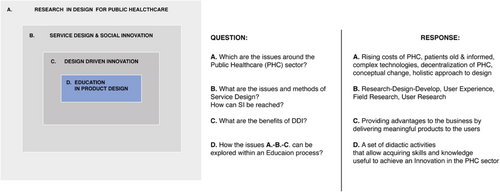
Starting with the general introduction to the course and its didactic aims, it then introduces the design problems faced by the students, and proceeds with the methods of Service Design (Stickdorn et al., 2011) chosen in order to respond to the problem and to acquire necessary skills. In particular, the course invited students to design the User Experience (Norman, 2004) local Healthcare scenario, analyzing the sector by visiting a Pediatric Emergency Room in the local public Hospital 'Policlinico Umberto I’. Choosing the Emergency Room as a case study provided an opportunity for the students to face the real societal, economic, and technological challenges, and for the educators to transfer a range of skills useful for the designers nowadays such as multidisciplinary approach and research skills, critical analysis of the current social, economic, cultural and technological contexts, empathy to the user, and the UX design tools, the Business Model Canvas (Osterwalder et al., 2011) as well as some other techniques like the ‘Stop Motion’ that supported students in developing their design proposal. The design proposal had to respond to the local Healthcare scenario by creating a Service and Social Innovation (Manzini, 2015) through designing products/services that would bring improvement to the current User Experience. Therefore, the process included the Desk Research on the themes of Service Innovation, Social Innovation and Healthcare Design, the User Research (Field), the data analysis and the ideation process finalized with a Design proposal of a New User Experience which then was evaluated from the point of view of economic and technological sustainability and was identified its level of innovation.
The paper concludes by sharing the results both from the didactic and practical points of view by mentioning the results of the didactic activities in terms of projects and feedback received from the students regarding the educational process. The educational process was also supported by the local public hospital, in particular, the Paediatric Emergencies Unit of the Hospital 'Policlinico Umberto I’, in the person of Prof. Fabio Midulla of Pediatric Emergencies and Intensive Care Unit-Department of Pediatrics, who has welcomed the students during the field research, and, by Prof. Corrado Moretti, Emeritus Chief of Pediatrics who has visited and provided the evaluations to the Final Works.
The course: design to care1
The International Master of Science in Product Design includes students with different cultural and academic backgrounds and thus represents a pool for interdisciplinary interaction. The course was organized as a team-based studio focused on the investigation of the contemporary changes in the structure of markets, as well as, of the emerging forms of production-distribution which require different design approaches and more sustainable design activities. Studio-based didactic involved students in practice and allowed them to develop a ‘constructed, self-regulated, situated, and collaborative’ educational process (Scheer et al., 2012) through teamwork.
In particular, the didactic aim of the Course (a.y. 2018–19) was to provide specific knowledge in the areas of Service and Social Innovation (Manzini, 2015) specifically in the context of Public Healthcare by developing new models, products and services in order to improve human wellbeing and activate sustainable innovation considering, at the same time, the environmental context, the productive possibilities, the economic system and the social aspects. The skills and knowledge required are transversal and heterogeneous and are finding their point of synthesis in the field of Service and Social Innovation in the context of Healthcare. The purpose was to transfer to the students the critical-analytical and synthetic-design tools in order to investigate the broad topic of Design-Driven Innovation (Verganti, 2009) and to develop a product/service proposal considering the degree of sustainability in the long term as a determining factor. In view of these considerations, the Design Work was aimed at developing a new product/service in the specific context of Pediatric Emergency that usually takes place in hospital emergency rooms and involves the children care (0–14 years) with different degrees of illnesses or injuries that require immediate medical attention and/or intervention. Therefore, each team had to develop a product/service which would take into account users' experiences in an emergency context and considering behaviours, needs and actions of all the actors involved in the context (children, parents, medical staff, hospital management, etc.) before, during and after entry to the Emergency Room (ER).
- from the social point of view, the phenomenon of patient-centered-care and the methods of user/human-cantered-design (Brown & Katz, 2011);
- from the economic point of view, the issue of economic sustainability, that is use, safeguard, and sustain resources (human and material) to create long term sustainable values;
- from the technological point of view, the phenomenon of new Information and Communication Technologies (ICT).
Design to care: teaching methods2
To design a service means to consider different aspects, stakeholders, to combine tangible and intangible solutions, eventually, the success of the project highly depends on the structure and organization of the design process. To successfully arrive at the final results, the whole process has followed the three-step structure throughout the semester: to research, to design, to develop. The didactic phases and the related technical/experimental contributions aimed to acquire the specific skills: research skills, inquiry capability, and design skills.
Students developed their research skills to acquire an interdisciplinary approach for the analysis of the healthcare scenario. Research methods helped observing both the technological and socioeconomic aspects.
Inquiry capability consisted in understanding the connections between technology, innovation, and design analyzing potentials and limits of existing processes. This served to develop a hypothesis of sustainable innovation able to cause reflections on existing social values, morals, and practices specifically in the field of Healthcare.
Eventually, the students had to develop a design proposal considering both productive and economic aspects, to build a consumption scenario around the cultural and social behaviors, and to develop a suitable solution to improve the User Experience in the public healthcare services scenario.
To research
The key purpose of the product-service innovation that students had to achieve was to propose an improvement to the pediatric emergency service of ‘Policlinico Umberto I’. The first step of the didactic process, the research, was therefore focused on the analysis of Service and Social Innovation (Manzini, 2015) scenario in the context of Healthcare. Each team had to collect and analyze knowledge and design practices in the field of Healthcare and Pediatric Emergency. The examples include those of the Human/User-Centered-Design approach,3 User Experience tools,4 Environmental, Economic and Social Sustainability concepts (Brundtland et al., 1987), Smart Technologies and Smart Ambient (Aarts & Encarnação, 2006), etc. The criteria for the selected projects and findings was either the demonstration of improvement in people’s behavior or the solution for an economic, social or environmental problem. The deliverable of this step was a conceptual map (Figure 2) where these findings were put in relation to provide inputs and evaluate potentials and restrictions of ‘Service and Social Innovation’ in the context of Healthcare.
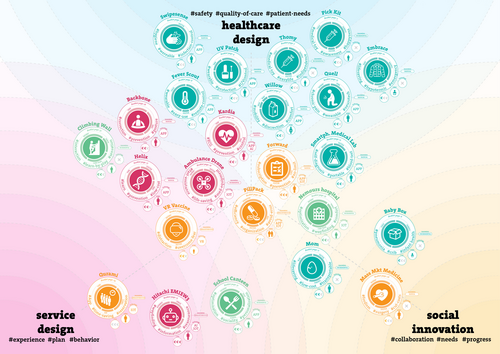
Infographics4 proved to be a useful tool to represent the information visually and to communicate the findings. Difficulties were met by those students who did not have a design background. These situations required additional attention from educators.
Field research contributed significantly to the understanding of the healthcare scenario as well as of the specific issues related to the service of pediatric emergency. The students have prepared the questionaries and were given a permission to interview both the visitors and the doctors when not at the service to collect opinions, ‘gains and pains’ throughout the entire user experience at the emergency room. This information collected during this visit was later represented and analyzed using User Experience tools.
The overall conclusion of the research phase that has lasted for a month consisted in building a holistic picture of the healthcare scenario and its intersections with the concepts of Service and Social Innovation. Later on, such an understanding not only allows to come up with an innovative and adequate design proposal but also to evaluate the level of its innovation.
To design
Starting from the results of the previous step, the next phase of the educational process ‘to Design’, was focused on analyzing the User Experience at the Emergency Room (ER), specifically, on what happens before, during and after this experience in terms of products, people, and environment. The Design step had three steps: the analysis of the findings of the User Research,5 the ideation, and the demonstration of a design proposal. The purpose of this phase was to manage and synthesize all the findings and inputs to demonstrate how and which stage of the user experience was improved thanks to the new design proposal.
The User Research allowed to collect empirical data related to the target audience: the doctors/nurses and the visitors (children and their parents or other relatives). The collection of empirical data was realized through the interviews, shadowing, and surveys and the data was interpreted using the User Experience (UX) as empathy map (Gray et al., 2010), persona (Lidwell et al., 2010), customer journey map (Brown & Katz, 2011) (Figure 3). The observation was accomplished through shadowing the daily activities, taking field notes, making sketches. The surveys involved a personal network of the students as well as open resources like Facebook and Google surveys. The surveys’ results were systemized later in a table demonstrating visually the percentages and the ratio of the collected data through pie charts. The field research to ER was insightful for both the local and the foreign students, as they could discuss the distinctions in the Healthcare systems as well as regarding the idea of what means to provide care in different countries and cultures.
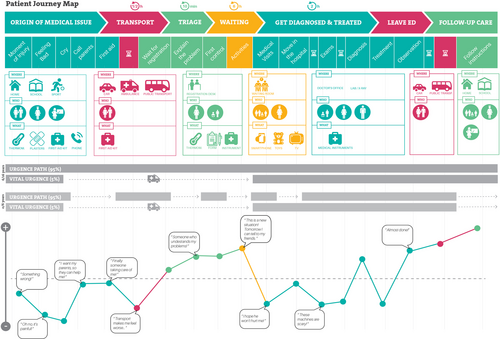
The data analysis was finalized in describing the archetypes, their social and demographic characteristics, needs, habits, motivations, taking in consideration their emotional, behavioral, and rational dimensions in respect to the current User Experience and in identifying steps of interaction with the current products/services and the touchpoints. Among other findings, the students have highlighted such 'pains' in the public healthcare service as time inefficiency, lack of awareness among the little patients, and as a result, psychological stress.
The next step of 'ideation' was organized as a 3-days Workshop structured as ‘Before-Idea-After’, where students had to come up with a proposal of a product/service that would create a new User Experience for the ER.
The step ‘Before’ was dedicated to extracting the ‘User Needs’ of each Persona and to select which of these to design a proposal for. During the process, it was noticed that the students met difficulties in making the difference between what means a ‘problem’ and the ‘User Needs’. For example, many of them have stopped with an idea of the time-related issues in the Emergency Room, because it was indeed a problem, however, the students found it difficult to understand what the need could be there.
The next day of the Workshop the students were asked to propose their idea according to the User Needs extracted at the previous step. The proposal had to be presented describing its three main aspects: functionality, usability, morphology. Specific attention was given to the usability as designing a service is rather designing the process than a function, and the interaction plays the key role in evaluating the improvement. The proposal could be an improvement of the existing product/service or completely new one. As it was mentioned above, the confusion in distinguishing the ‘problem’ and the ‘user needs’ has led to restrictions in their ideas, as for many students seemed that there was only one problem (time) that had only one solution (e-queue). Shifting their attention back to the User Needs has opened a range of new design opportunities. For instance, doctors, nurses, patients that are different in their age and their physical condition, and the people who accompany them, all of them had their needs different one from another while the same time was passing for them.
In the third and the last day of the Workshop the students had to prepare a Storyboard4 using a ‘Stop Motion’ technique6 to explain and test the new Experience proposed for the ER. The ‘Stop Motion’ technique is generally applied to animated film-making, where the animation is composed of separate frames in which objects are fixed in small increments and when played back the sequence seems to be a smooth motion. The goal was to visualize the user need and 'play' the new experience highlighting the changes between the previous condition and pointing out the new user behavior. The advantage of the ‘Stop Motion’ technique lays in the way it is performed. The students not only had to imagine the interaction between the user and their proposal but to actually build it and test it step by step, ‘frame by frame’. The process of projects’ evaluation through re-creating (learning through making) the interaction process between the final user and the proposal step by step has simplified the empathy to the user, and has evidenced immediately the problems of the interaction process, making it visible when some component was either missing or extra (Figure 4). As the picture shows, the students were provided with the floor plan of the Emergency Room, so they had to build a model of that and to make the ‘puppets’ of their users. Then they had to make a series of pictures, each of them stating a moment of the interaction and users’ behavior. Then this series of pictures was set together as a short video explaining the new Experience in the ER according to the ‘User Needs’ selected at the previous steps. Just as it was said that the service is rather a process than an object, the video seems to fit the format as it is spread in time and enables to demonstrate the whole process and not only a moment. Thus, the identified problems in the public healthcare service have highlighted the users' needs in being informed and psychologically supported from the patient's side, as well as in efficient arrangements of the workload form the doctors' side. The public healthcare services rely on the government support and often lack enough financial aid. The students sought to also consider that 'need' or shortage of the system.
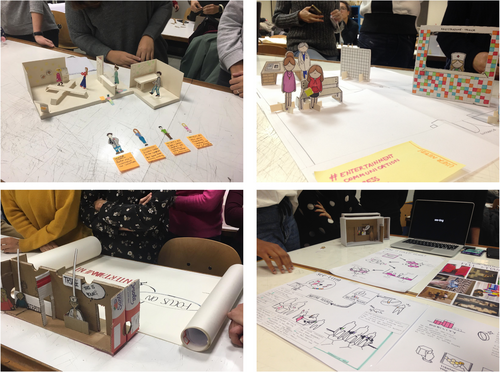
To develop
The 3rd and the last phase of the didactic activities was dedicated to developing the Social Innovation in the field of Healthcare based on the approach of Service Design (Stickdorn et al., 2011). According to Service Design approach, the step ‘Develop’ aims at evaluating the level of innovation and the validity of the proposal regarding the social request. The students were given two design tools to evaluate their proposal: the Benchmarking (Boxwell, 1994) and the Business Model Canvas (Osterwalder et al., 2011).
The Benchmarking was reorganized according to the diagram of the Systemic Innovation,7 where the students could place their findings in relation to the two axes: the creation of new markets and the change of the use (Figure 5). This analysis has allowed students to understand which level of innovation their proposal achieves and therefore which aspect of the system it impacts the most—the market side, the user's behavior, whether it provokes big or small and targeted technological or economic shifts. The healthcare services involve the government, the pharmaceutical and manufacturing industries as well as many other institutions.
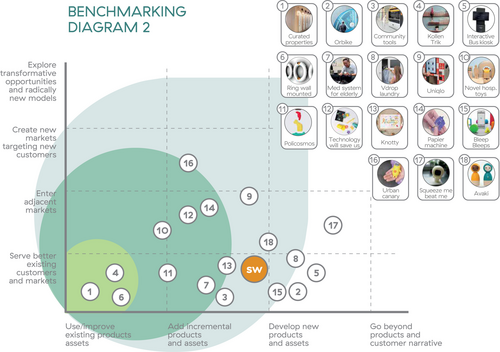
The Systemic diagram has proved to be a useful tool to make students be aware of the feasibility of their proposal because understanding what systems are involved in its production helps evaluating the economic and technological sustainability of the proposal; as well as of the responsibility that the designers carry because the diagram demonstrates who and what will be impacted by this proposal; eventually, the students compared their proposal to other project on market.
- what is the real value for the users;
- the identification of the target audience of the value proposed;
- the stakeholders useful to realize the design proposal;
- the economic impact of the business (in terms of quality).
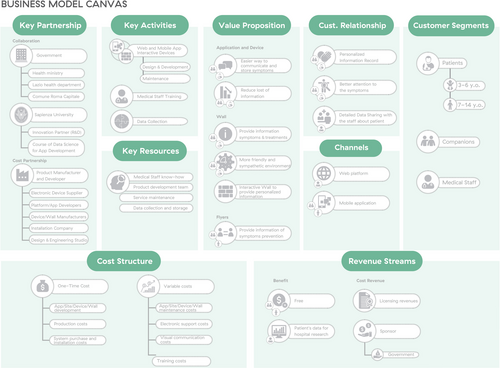
Within the framework of Design Driven Innovation (Verganti, 2009), the relationship between design, business, and innovation is very strict. However, often designers lack the business competences which makes it difficult for them to arrive to an adequate, feasible in terms of economics result. Business model canvas allows to obtain an idea of the possible costs and potential resources as well as to highlight the key value and innovation to the user. When the analysis is performed at a good level, BMC helps to either eliminate or add the elements to the design proposal that could enhance its manufacturability and economic aspect, and eventually, to achieve a design-driven innovation in real life.
During the process, several problems in learning and comprehending have been noticed. Regarding the Systemic Innovation diagram, the students met difficulties in evaluating correctly the level of innovation, as for many of them it seemed that the higher is the position of the project in the diagram, the ‘better’ the design is. The achievement was to reach an understanding that the Benchmarking and the diagram serve to correctly place the product in the market, rather than to force the project to the diagram’s borders. Regarding the Business Model Canvas, the problems were related to identifying the owner of the business in the project, which has thus led to confusion in finding the stakeholders, the key resources and activities. The collective misunderstanding has brought to an idea that some issues require deeper explanation.
Conclusion8
The didactic activities have been concluded with a series of projects responding to the User Needs at the Pediatric Emergency Room proposing a New User Experience. The proposals have taken into consideration the analysis of the state-of-the-art in Service and Social Innovation and Design for Healthcare, the students have conducted the User Research, have evaluated the level of Innovation, the technological feasibility and economic sustainability of their proposals. After, for the Final Works, the students have developed the mock-ups of their design proposals that would demonstrate the morphology and the usability of the product/service they designed. They also have prepared a model of the Emergency Room in order to visualize the Proposal in the environment as well as the people involved in the New Experience. The booklets were prepared in order to report all the three steps of the didactic activities: ‘to Research’, ‘to Design’ and ‘to Develop’. The videos and the brochures were done in order to prepare the projects for the possible promotion, including the crowdfunding campaigns.
Practically, the proposals mainly responded to the children’s experience providing objects and services that would distract them from the negative experience, thus contributing to their better emotional and psychological condition during the time spent in the ER through a new behaviour proposed. Some proposals though included also other organizations and institutions in their scenario, for example by including the schools or psychological research units.
Next, there are the 2 examples of the students’ Final works that we consider the most complete from the design point of view since they have not only responded to the problems but also included other considerations, institutions, and disciplines in their projects:
1. NURSE Team: Mohammad S., Peltier T., Vitturini L., Volanti V. «ER campaign» (Figures 7 and 8). The project aims at reassuring the young patients throughout the Emergency Room experience and increase their awareness of issues relevant to their health and safety. It involves an awareness campaign that goes outside the ER, accompanying the child at home and at school. The campaign will start in the ER, when at the triage the patient receives a closed box containing a cardboard figure, some information and a personal QR code. Through the code the patient can download the Friends In ER app and access a personal area, create an avatar and access a virtual room where there are avatars of children who, like him, in the past have been in the emergency room and they shared their experience. This makes the patient feel less alone. When the child is called to visit, he will find, in the various departments, accessories distributors, different for each problem dealt with. The child will be able to collect these accessories thanks to the special slot, in his personal box. The patient, once back home, can then open the box and have fun coloring, customizing, gluing the pieces, creating an avatar that recounts his particular experience within the emergency room. Through the app, the child can finally share his/her experience, now completed, and be an example for other children who will be in the ER in the future, so that they can feel less alone. The campaign will also continue at school, where children will find informative posters, a book containing a story for each accessory and will participate in lessons on the subject prepared by the teachers, facilitating the sharing of experiences among peers.
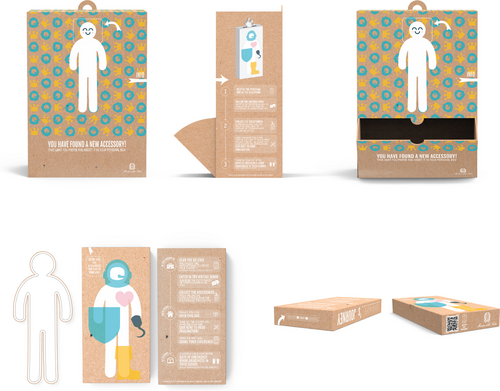

2. IC Team: Belluzzi C., Duello P., Chakka S., Li S., Hamzeh langroodi N. «Emotional Room» (Figure 9). Emotional Room is a project that aim to empower existing treatments with the introduction of a therapy based on emotions relieving. The system is composed by two elements: the device and a display wall. Experiencing the device, children can get rid of bad feelings during their journey in the pediatric ER. The project, indeed, acts on three main emotions (anger, stress and anxiety), integrating into the design process colors therapy, tactile feedback studies and morphologies of childish products. The analog interaction is supported by a digital system of data collection, accessible by doctors and researchers, as well as parents. The service offered aims also at better communication and entertainment for patients, improved organization of the medical staff and full interaction among children, parents, nurses and doctors. This project can be a turning point in the medical field: it is the first time that feelings are considered as important aspect during medical treatment. It can develop new studies based on emotions that can bring innovative therapies.
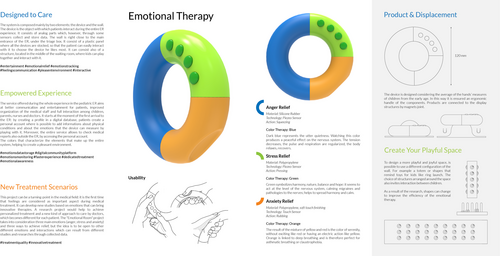
From the didactic point of view, the most difficult in comprehension part for the students was ‘to Develop’, since the activities and the instruments of this part (Business Model Canvas and Innovation level analysis) required the skills related typically to marketing/business activities. Some students though have appreciated the practical value of these instruments in real life, while it is commonly considered that nowadays university education stays too much far away from the job reality. This feedback then gave an idea of the possible missing bridge between the two worlds, which is the business analytic skills that allow bringing the ideas down to the earth and make them feasible and credible for the potential investors. The Workshop instead, with its spirit of a design studio and collective work, helped many of the students to focus and come up with ideas in a short time. In particular, the Stop Motion technique has contributed to fast analysis and verification of the Design Proposal by providing simple, hands-on tools for re-creating and ‘experiencing’ the User Experience around the new products and services. Later, some students have encountered difficulties in maintaining coherence in between their original idea and the final results, as while analyzing the ideas they were encountering some negative considerations which pushed some of them to deny their ideas and change them. For the final examination, an expert from the medical field has been invited to give a non-design point of view and to assess if the projects have a correct and comprehensible communication language, since the next step would be to present the projects to the Pediatric Emergency Room the students have been designing for in order to get a possibility to realize the project. Having said all this, we can conclude that the overall experience has demonstrated the validity of the teaching method, as the three parts: to Research, to Design, and to Develop, have allowed the students to structure their activities that resulted in innovative ideas of Services and in coherent storytelling of the projects. The Research part has brought them to un understanding of the importance of the emotional component of the User Experience, ‘to Design’ part has demonstrated the practical value of the UX tools, and ‘to Develop’ part provided some useful evaluation tools that allow the analysis of the project form technological (mock-up) and economic (Business Canvas) point of view. In particular, Prof. Corrado Moretti, Emeritus Chief of Pediatrics of ‘Policlinico Umberto I’, University of Rome, during his visit at the Final Works, has pointed out the actual value of the design proposals, and, thus, the work on the project continues with the aim to promote these prototypes to the ‘Policlinico Umberto I’ hospital for further possible development.
In conclusion, we can say that the teaching experience carried out has highlighted the students’ ability to interact satisfactorily with the Service Design tools proposed. In line with what Morelli and Götzen says (2017), the students have been able to adequately understand and address strategic relations within local-public ecosystems; propose models that address the issues of business or social sustainability of the new solutions; communicate visions that amplify local initiatives into a broader policy change.
Although the design results obtained originated from similar needs, very different proposals were developed from each other. However, in all of them, it is possible to identify a common systemic vision, which that he took into account not only the single aspect, but a large number of variables related to the problem they were facing. In this problem-solving activity, adopting a broader perspective and investigating the circumstances from different points of view, allowed to identify both the direct and indirect implications, to develop socially and economically sustainable solutions, and to define more meaningful user experiences.
It is therefore clear that developing new teaching approaches in the field of Service Design Education for the Public Healthcare Sector thus could become a strategic element for stimulating incremental and radical innovation (Norman & Verganti, 2014) to obtain services that involve a multiplicity of competences and actors aimed at enhancing life expectancy, quality of life, diagnostic and treatment options, as well as the efficiency and cost-effectiveness of the healthcare system (Varkey et al., 2008).
Acknowledgements
The authors would like to thank the Paediatric Emergencies Unit of the Hospital Policlinico Umberto I, in the person of Prof. Fabio Midulla, Prof. Corrado Moretti, and the neonatal device company Ginevri srl for the support received during the development of this teaching experience. Furthermore, authors would like to thank the students of the Master of Science in Product Design, Sapienza University of Rome: Mohammad S., Peltier T., Vitturini L., Volanti V., Ayala Ramirez M.J., Natasha E., Talone G., Telesca E., Belluzzi C., Duello P., Chakka S., Li S., Hamzeh langroodi N.
Biographies

Angela Giambattista PhD, Lecturer and Research Fellow at Department of Planning, Design, and Technology of Architecture, Sapienza University of Rome, Italy. Her research interests are in the field of Product Design and they are directed in particular to the aspects of Design-Driven Innovation and User Experience, especially in the Healthcare context.
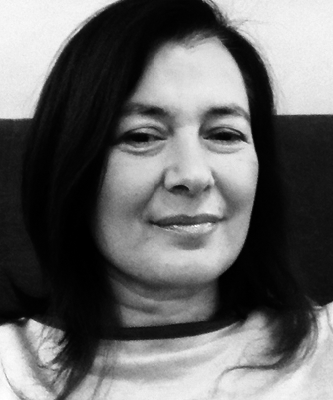
Loredana Di Lucchio Full Professor at Sapienza University of Rome. Her research activity is focused on the relationship between production and consumption in contemporary societies within a convergence between the approaches of the Strategic Design, Product Design and Design for User Experience.

Mariia Zolotova PhD, lecturer at Xi’an Jiaotong-Liverpool University. Her research interests lay in design methods, User Experience, Interaction design and design innovation.
References
- 1 The Abstract and the paragraphs ‘Introduction’ and ‘The course’ was written by Angela Giambattista.
- 2 The paragraph ‘Teaching Methods’ was written by Mariia Zolotova.
- 3 Tools for Design Thinking process: «What is Human Centered Design» www.designkit.org/human-centered design [Last access 04.04.2020].
- 4 Tools for Designing Services: «Service Design Tools » servicedesigntools.org [Last access 10.04.2020].
- 5 User Research Basics. usability.gov/what-and-why/user-research.html [Last access 17.04.2020].
- 6 An example of slow-motion film: «First animated film». Guinness World Records. [Last access 6 April 2020].
- 7 Systemic Innovation Diagram: Hollins, P. (2017). RAGE Potential Business Models. RAGE EU 2020 Deliverable.
- 8 The paragraph ‘Conclusion’ was written by Loredana Di Lucchio.



